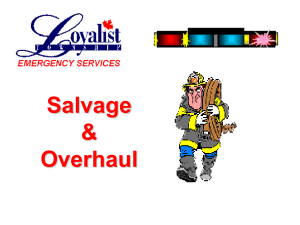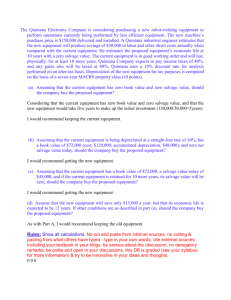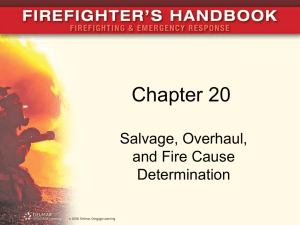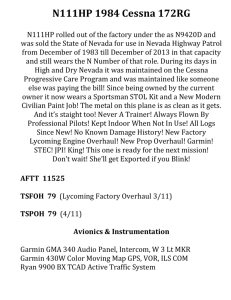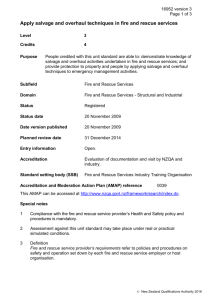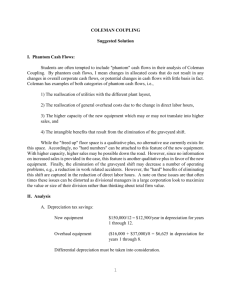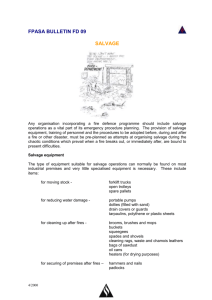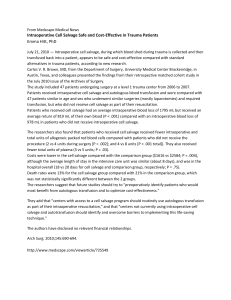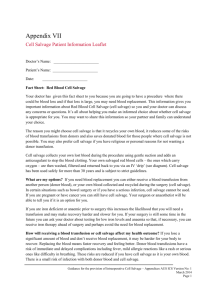Chapter 19: Salvage and Overhaul - Fundamentals of Fire Fighter
advertisement
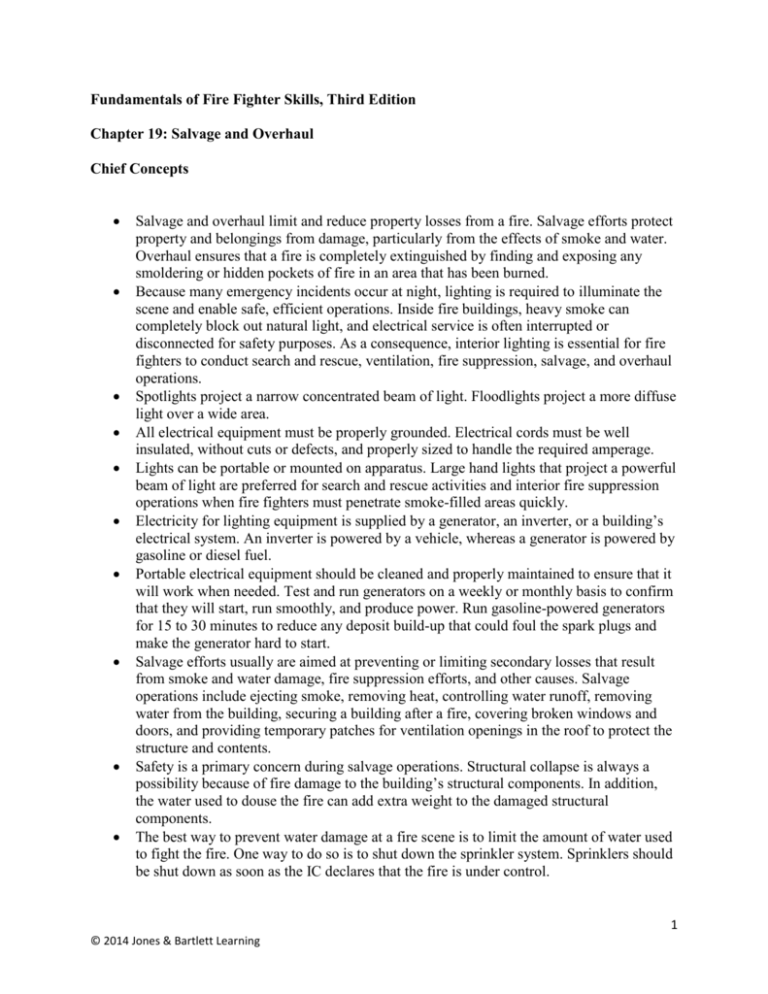
Fundamentals of Fire Fighter Skills, Third Edition Chapter 19: Salvage and Overhaul Chief Concepts Salvage and overhaul limit and reduce property losses from a fire. Salvage efforts protect property and belongings from damage, particularly from the effects of smoke and water. Overhaul ensures that a fire is completely extinguished by finding and exposing any smoldering or hidden pockets of fire in an area that has been burned. Because many emergency incidents occur at night, lighting is required to illuminate the scene and enable safe, efficient operations. Inside fire buildings, heavy smoke can completely block out natural light, and electrical service is often interrupted or disconnected for safety purposes. As a consequence, interior lighting is essential for fire fighters to conduct search and rescue, ventilation, fire suppression, salvage, and overhaul operations. Spotlights project a narrow concentrated beam of light. Floodlights project a more diffuse light over a wide area. All electrical equipment must be properly grounded. Electrical cords must be well insulated, without cuts or defects, and properly sized to handle the required amperage. Lights can be portable or mounted on apparatus. Large hand lights that project a powerful beam of light are preferred for search and rescue activities and interior fire suppression operations when fire fighters must penetrate smoke-filled areas quickly. Electricity for lighting equipment is supplied by a generator, an inverter, or a building’s electrical system. An inverter is powered by a vehicle, whereas a generator is powered by gasoline or diesel fuel. Portable electrical equipment should be cleaned and properly maintained to ensure that it will work when needed. Test and run generators on a weekly or monthly basis to confirm that they will start, run smoothly, and produce power. Run gasoline-powered generators for 15 to 30 minutes to reduce any deposit build-up that could foul the spark plugs and make the generator hard to start. Salvage efforts usually are aimed at preventing or limiting secondary losses that result from smoke and water damage, fire suppression efforts, and other causes. Salvage operations include ejecting smoke, removing heat, controlling water runoff, removing water from the building, securing a building after a fire, covering broken windows and doors, and providing temporary patches for ventilation openings in the roof to protect the structure and contents. Safety is a primary concern during salvage operations. Structural collapse is always a possibility because of fire damage to the building’s structural components. In addition, the water used to douse the fire can add extra weight to the damaged structural components. The best way to prevent water damage at a fire scene is to limit the amount of water used to fight the fire. One way to do so is to shut down the sprinkler system. Sprinklers should be shut down as soon as the IC declares that the fire is under control. 1 © 2014 Jones & Bartlett Learning Sprinklers can be shut down by using sprinkler wedges or sprinkler stops, or by shutting off the main control valve. Water may be removed from a structure with a salvage pump, water chutes, water catchalls, water vacuums, or drainage pumps. Salvage techniques to limit smoke and heat damage include closed doors, ventilation, and salvage covers. Salvage covers can be used to protect floors and furniture from smoke and water damage. The best way to protect an object from water and smoke damage is to remove it from the structure and place it in a safe location. Overhaul is the process of searching for and extinguishing any pockets of fire that remain after a fire has been brought under control. A single pocket of embers can rekindle after fire fighters leave the scene and cause even more damage and destruction than the original fire. Many injuries can occur during overhaul. During this time, fire fighters may be physically fatigued and require rehabilitation. In addition, the structure may be compromised and visibility limited. Be aware of these hazards and proceed with caution. A charged hose line must always be ready for use during overhaul operations to suppress flare-ups and explosions. Always evaluate the structural condition of a building before beginning overhaul. Look for the following indicators of possible structural collapse: • Lightweight and/or truss construction • Cracked walls, out-of-alignment walls, or sagging floors • Heavy mechanical equipment on the roof • Overhanging cornices or heavy signs • Accumulations of water During overhaul operations, do not compromise the structural integrity of the building. The area that must be overhauled depends on the building’s construction, its contents, and the size of the fire. All areas directly involved in the fire must be overhauled. Use your senses of sight, hearing, and touch to determine where overhaul is needed. You can also use a thermal imaging device to find hot spots. 2 © 2014 Jones & Bartlett Learning

